There is nothing more frustrating than buying new sportswear than discovering that they are not the right fit. This happens most times because of insufficient knowledge about the different types of fabrics that can be used to make workout clothing. Typically, there are two types of fabrics used for production, namely natural and synthetic fabrics.
Synthetic fabrics are man-made materials, created through mixing chemicals made from natural gas, oil, and coal, which are then molded into fibers that are woven into fabrics. Synthetic fabrics are preferred to their natural counterparts as they are professionally fabricated with excellent properties that support all kinds of workouts.
However, there are different types of synthetic fabric. Keep reading those sportswear fabrics choosing steps to select the best type. But first, what are synthetic fabrics and their composition?
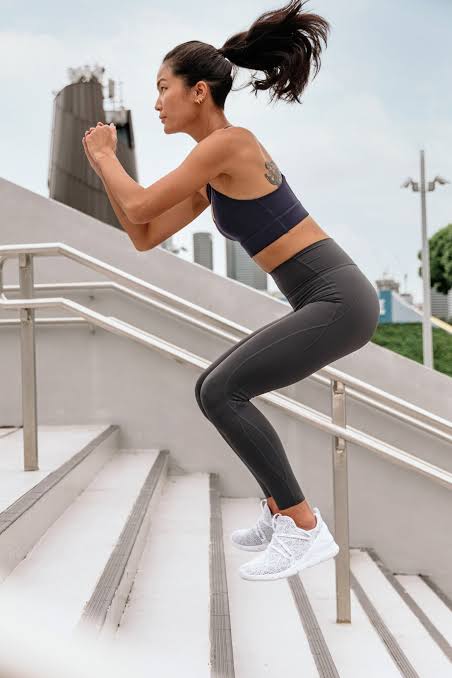
What is Synthetic Fabric?
Since ancient times, clothes, including sportswear have been made from natural fabrics like cotton, leather, wool, and silk. However, nowadays, sportswear manufacturers have switched to synthetic fabric, which is a man-made option that can perform as much as a natural fabric.
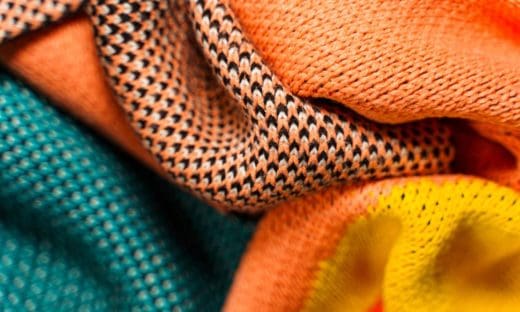
What are Synthetic Fabrics Made of?
Synthetic fabrics are made through a special manufacturing process, which makes them have unique properties that are not found in natural fabrics. For example, they are resistant to water, stain, and wrinkles.
The points below explain their composition:
- Chemicals Based on Oil Products
The primary raw material used in the making of synthetic fabric is petroleum, which is a fossil fuel sourced from oil products. The necessary chemicals that are needed for the manufacturing process, such as propylene and ethylene are extracted from petroleum. These chemicals function as the building blocks for the polymers used in fabric production.
- Product of Polymerization
This involves the chemical bonding of the chemicals extracted from petroleum. There are different types of polymerization used in fabric production, such as addition polymerization and condensation polymerization, based on the type of fabric produced.
In the case of sportswear, some of the common synthetic fabrics used are polyester, nylon, and spandex. Chemicals like ethylene glycol and terephthalic acid, or dimethyl terephthalate, are polymerized to create polyester. Contrarily, substances like hexamethylenediamine and adipic acid are polymerized to produce nylon. While segmented polyurethane is used to create spandex, which is also known as elastane or lycra.
Once the chemicals are used to form the polymers, they are processed into fibers through spinning or extrusion. The fibers are then processed into yarns that are woven or knitted into fabrics.
The Unique Properties of Synthetic Clothing
Despite the fact that there are different types of synthetic clothes, they all share similar properties. They are smooth, absorb moisture and dry quickly, are resistant to wrinkles, are durable, etc. When compared to natural fabrics, synthetic fabrics are better. Here are some other unique properties they have:
- Lightweight but Very Strong
Amongst the notable characteristics of synthetic fabrics is that they are lightweight, however, they have remarkable strength. With excellent tensile strength, the synthetic fabric can stand against considerable stress and strain without getting damaged. This makes it perfect for sportswear, as it guarantees durability even when used during intense workouts. Also, synthetic clothing doesn’t contribute additional weight; they are light.
Natural fabric, on the other hand, is strong but not lightweight. It contributes to the body mass of the wearer and can be less resistant to wear and tear when compared to synthetic fabric.
- Easily Maintainable with Less Creasing
Synthetic clothes are generally easy to maintain and require little to no effort to retain their freshness. They are resistant to wrinkles, which is why they crease less than clothes made from natural fabrics. Even after everyday wear and repeated washing, synthetic clothing maintains its shape and smoothness.
Natural fabrics like cotton and linen, on the other hand, are prone to wrinkles and require more care to properly wash and iron them.
- Dries Quickly
Synthetic fabric is commonly known for its moisture-wicking abilities, allowing for quick drying. The design mechanism involves wicking away moisture from the skin to the fabric’s surface, where it then evaporates. This is an essential feature for sportswear, as it helps to keep the body cool during intense workouts or in humid conditions.
On the other hand, while natural fabric might absorb moisture, it takes a longer time to dry. This makes the wearer feel damp, uncomfortable and irritated.
- Natural Elasticity and Flexibility
Synthetic clothing has the capacity to stretch and recover its original shape without wear or tear. This offers absolute freedom to move comfortably and get a snug fit. This is very helpful during workouts as mobility won’t be restricted. Examples of synthetic materials that are especially known for their excellent stretchability and flexibility are Spandex and Polyester.
On the other hand, while clothing made from natural fabric also has some degree of flexibility and elasticity, they have limitations. And when overstretched, they tend to strain.
Polyester – Suits Any Type of Workout and Weather
Originally developed during World War II, Polyester was first used as a material for making parachutes and other war supplies. This is because of its strength to survive any condition, either low, mild, or intense. After the war, cloth manufacturers started using it to make different types of clothing, including workout apparel.
Let’s further explore what Polyester is, its unique properties, and examples of its application in sportswear.
What is Polyester?
This is one of the most popular synthetic material examples used to make sportswear. This is due to its chemical composition that results in strong and stiff fabric that can stand against wear and tear. Also, polyester has numerous properties that enable its versatility and high performance across all kinds of workouts and weather. Regardless of the intensity of the physical exercise or how hot or cold the weather is, sportswear made with polyester fabric can be used.
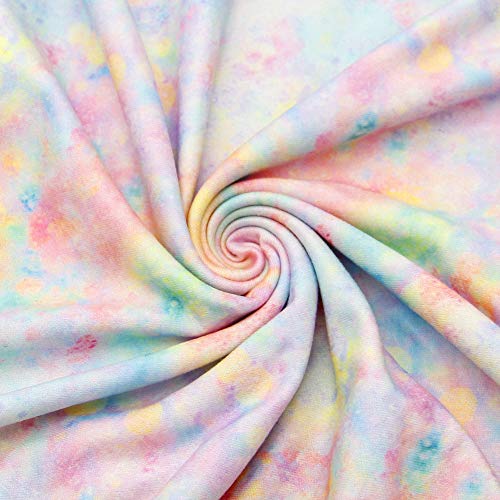
The Properties of Polyester
- Cheap
Polyester is popularly known for its affordability. The manufacturing is highly efficient and cost-effective, making it less expensive compared to other fabrics. Its cheap price point makes it accessible to people who are on a low budget and don’t want to compromise on the quality of their workout clothing. So, polyester fabric is a guarantee for quality sportswear without breaking the bank.
- Easy Care
Just like other examples of synthetic materials, polyester is very easy to care for and maintain. This is why it is considered a perfect option for sportswear, as all the sweat and stains accumulated during workouts will be cleaned easily.
Also, it is highly resistant to wrinkles, which means that much ironing and steaming is not required. Furthermore, polyester is machine washable, color-fast, and dries quickly, allowing for easy and hassle-free laundering.
- Moisture Resistant
Another notable characteristic of polyester is its exceptional moisture-wicking ability. Its hydrophobic nature makes it an ideal option for workouts, including intense sessions that result in sweats. Polyester effectively pulls moisture off the body to the surface of the cloth where it evaporates quickly. This feature ensures that your skin remains dry, cool, and comfortable, even when the weather is hot.
Examples of the Application of Polyester in Sportswear
Oftentimes, sportswear is created with a combination of different synthetic fabrics or a mixture of natural fabrics.
For example, yoga clothing, sports bras, and leggings are created from a combination of Polyester and Spandex. This mixture provides the perfect blend of comfort, moisture-absorbency, and flexibility. While Polyester offers comfort by wicking away sweat, Spandex ensures flexibility, as well as a snug and supportive fit, allowing unrestricted movement.
Summer sportswear is created from a combination of Polyester and Cotton (learn: Cotton vs Polyester: Which One to Choose for Sportswear). This is to benefit from the breathability, softness, and natural feel that Cotton gives to the skin, as Polyester contributes its durability, wrinkle-resistance, and moisture-wicking properties. This mixture offers the best of both the natural and synthetic clothing world.
Polypropylene – Outdoor Environment Sportswear
Polypropylene is one of the synthetic materials examples that was originally created not with the intent to use mainly for sportswear, but with time became a popular fabric for workout clothing.
The following paragraphs will explore what Polypropylene is, its unique properties, and examples of its application in sportswear.
What is Polypropylene?
Polypropylene is a thermoplastic polymer, which means that it can be melted and remolded severally without significant degradation. This material is obtained from propylene monomers through polymerization, which results in a long-chain polymer structure. Polypropylene is manufactured through a special polymerization process with excellent properties that makes it perfect for outdoor environment sportswear.
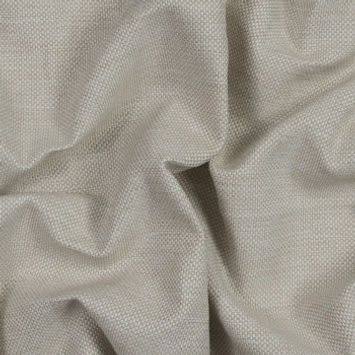
The Properties of Polypropylene
- Entirely Waterproof
Polypropylene is inherently waterproof, making it the most suitable fabric that can be used outdoors. It is designed to repel water, which makes sure that you don’t feel damp and uncomfortable despite being exposed to rain, moisture, or splashes of water. Synthetic clothes made from polypropylene are especially beneficial for activities like hiking, camping, or water sports.
- Thin and Flexible
Another major feature of Polypropylene is its thin and flexible nature, which makes it a preferred option for outdoor activities. Its structure allows for free movement with no string of restrictions. This is very beneficial for activities like running and climbing, as the clothes’ lightweight structure offers overall comfort, reduces bulkiness, and enables good breathability.
- Durable and Wrinkle-Resistant
Also, polypropylene is extremely durable and resistant to wrinkles.
The fabric is highly capable of withstanding wear and tear, which makes it ideal for rugged outdoor environments, such as hiking and camping. The durability feature ensures synthetic clothing made from Polypropylene can resist tough conditions and repeated wear.
The wrinkle-resistant feature ensures that the sportswear maintains its smooth and neat look even after repeated use.
Examples of the Application of Polypropylene in Sportswear
Polypropylene is commonly used in making sportswear undergarments like sports bras and performance undershirts. The fabric’s lightweight and flexible features make it ideal for making close-fitting undergarments that preserve the body parts and enable freedom of movement.
Polypropylene fabric is also used to make skin-tight base layers that are worn during cold weather or high-intensity workouts. The moisture-wicking properties of the base layers help to regulate the body temperature by moving sweat away from the body. This makes the skin dry and cool, offering comfort during intense workouts or in hot weather conditions.
Additionally, the application of Polypropylene can be found in outdoor accessories like gloves, socks, and headbands. They help to keep the outer parts of the body dry and safe from rain or snow. The fabric’s strength and flexibility ensure maximum protection from rigged outdoor conditions and enable free movement.
Nylon – Ideal for Heavy Duty Activities
Nylon is another synthetic option in the list of the top sportswear fabrics. Just like Polyester, Nylon was originally marketed during World War II to serve as a replacement for silk and hemp parachutes. But by 1945, Nylon became popular and was about 25% of the fabrics produced. Fast forward to the present world, Nylon fabric has circulated the market largely.
The following paragraphs will further explore what Nylon is, its unique properties, and examples of its application in sportswear.
What is Nylon?
Nylon is a lightweight but very strong and durable synthetic fabric that has gained popularity as an ideal option for heavy-duty activities. It is easy to wash, dries quickly, naturally stretchy but is often combined with other fabrics for better wear and feel. This is because nylon by itself can be staticky and tend to melt when exposed to flame or high temperature.
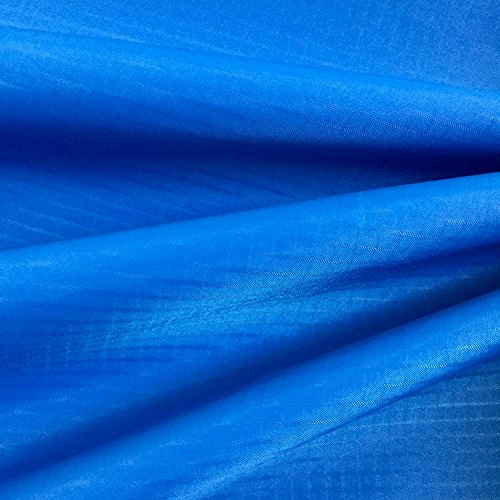
The Properties of Nylon
- Strong and Durable
One of the characteristics that make Nylon stand out among other synthetic material examples is its strength, durability, and resilience. It has a high tensile strength, which means it can stand against tension and stretching without getting damaged.
This makes it suitable for heavy-duty applications, like climbing, hiking, and outdoor sports. Nylon’s resilience ensures that it maintains its integrity while it withstands harsh conditions like abrasion and rough handling.
- Moderate Moisture-Wicking Abilities
While Nylon is not very effective in wicking away moisture like some other synthetic fabrics, it offers a moderate moisture-wicking ability. Nylon fibers have a low moisture absorbency rate. This means that they don’t really absorb moisture, rather they allow moisture to evaporate quickly. This feature ensures that your skin is dry and cool during heavy-duty activities.
Examples of the Application of Nylon in Sportswear
Amongst the numerous sportswear Nylon is used to make our compression garments like sports bras, cycling shorts, and compression shirts. Its high strength and elasticity offer great support, helping to reduce muscle stress and boost performance. Having the ability to retain its shape and offer a snug fit, Nylon ensures that sportswear retains its composure during demanding physical exercises.
Thanks to its high stretch and sleek fit, Nylon is popularly used for making swimwear. The fabric’s elasticity allows for an adaptive fit, making it suitable for different body sizes.
It also supports the hydrodynamics of swimwear, allowing for flexible movement. In addition, Nylon is resistant to chlorine and saltwater, which are components of swimming pools. And its moisture-wicking characteristic ensures that the swimwear dries quickly.
Nylon is also commonly used for making outdoor sportswear like jackets and raincoats. These apparel are designed to serve as protection from splashes of water or rain, which is why they are often used when exercising under cloudy or rainy weather.
Spandex – The Stretchy Sportswear
Spandex goes by multiple names, including Lycra or Elastane. It was discovered in the late 1950s to serve as an alternative to rubber products, and the rise of Spandex was rapid.
The following paragraphs will further explore what Spandex is, its unique properties, and examples of its application in sportswear.
What is Spandex?
This is one of the notable synthetic materials examples, as it’s created using Polyester and Polyurethane polymers. This composition gives it the capability to withstand moisture, making it perfect for the clothing worn during demanding physical activities. It is also highly elastic and used for making form-fitting outfits that are stretchy and comfortable.
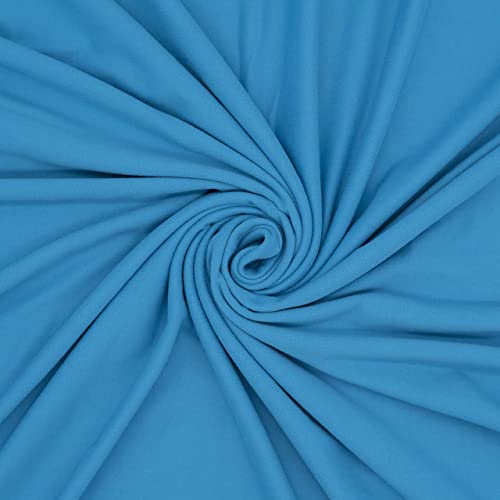
The Properties of Spandex
- Incredible Stretch and Recovery
Spandex is a popular synthetic fabric known for its exceptional stretch and recovery capabilities. It can be stretched as far as 5 to 8 times its original length without losing its elasticity and shape. This allows for convenient movement and stretch during workouts, making it perfect for sportswear that requires a supportive and fitted cloth.
Furthermore, Spandex has outstanding recovery, as it quickly retains its original state after stretching.
- Quick-Drying
Just like other examples of synthetic materials, Spandex is a quick-drying fabric that is highly useful for making sportswear. It has a low water absorption rate, which facilitates moisture evaporation and prevents the clothing from being waterlogged.
This ensures that your body is dry and you are comfortable when working out. This characteristic helps to regulate your body temperature by effectively wicking off perspiration from the skin.
Examples of the Application of Spandex in Sportswear
Spandex is a key component in the production of workout leggings and yoga pants, as they require a high degree of stretchability for free movement. This fabric provides the necessary elasticity needed to make form-fitting workout clothing that is comfortable with a supportive fit.
Spandex can also be used to create compression garments like compression shirts, sleeves, socks, and shorts. The supportive fit design of the workout clothing applies pressure to certain body parts, aiding in blood circulation and muscle support. This helps to reduce muscle vibration and fatigue during workouts. The elastic nature of the material allows the muscle to expand freely.
Additionally, due to Spandex’s ability to resist moisture, quick-drying capability, and the creation of a form-fitting fit, it is commonly used for making swimsuits. However, it can be mixed with other synthetic fabrics like Polyester or Nylon for optimal performance.
Get Synthetic Fabric Sportswear at Factory Prices from UGA
UGA is a reputable and experienced workout clothing manufacturer that provides a wide range of sportswear for men and women, including gym clothing, workout clothing, yoga clothing, sports clothing, and running clothing.
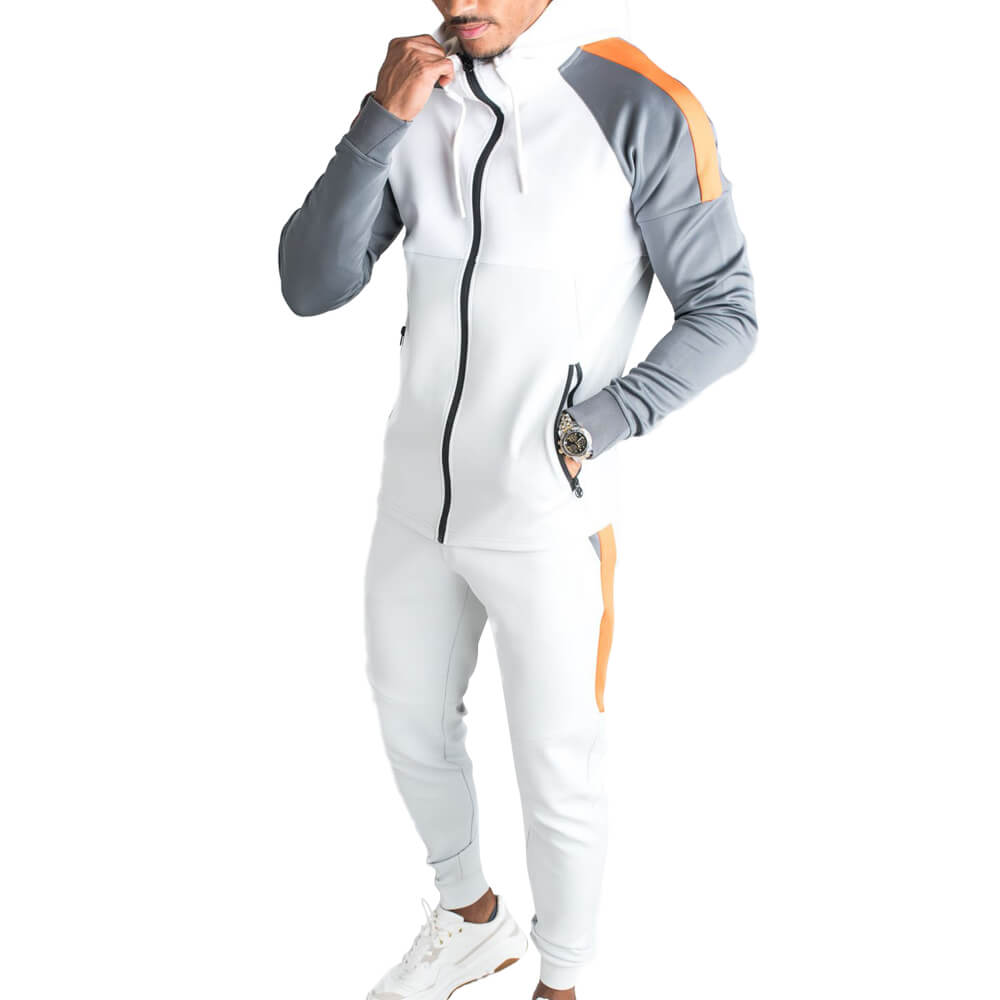
High-Quality Synthetic Clothing at Competitive Prices
Using high-grade synthetic fabrics that are professionally vetted, we manufacture various types of sportswear. Operating with a streamlined manufacturing process, we offer a low minimum order quantity of 100 pieces at competitive prices. We work with you on your budget to provide the best synthetic clothing.
Customize Synthetic Clothing to Meet Your Needs
Having a large in-house factory filled with state-of-the-art machinery and professional designers, we are readily available to bring your workout clothing design ideas to life. We communicate with you at every stage of production to ensure your requirements are met.
Also, we offer endless customization possibilities, such as logo, color, label, hang tags, and packaging to make your sportswear unique.
Stand Out with Transportation Time
Among our value-added services is convenient logistics management. We partner with trusted logistic companies, which guarantee the delivery of your order within the lead time. With a guarantee of fast, economical, and safe delivery, you have the opportunity to tap into the rising demands within your target market.
Conclusion
When choosing sportswear, you will come across many options as they are made from different forms of natural and synthetic fabrics. However, natural fabrics are limited, hence the adoption of synthetic fabrics, which are not just readily available but possess some excellent properties that natural fabrics don’t offer.
In this post, we’ve discussed extensively topics like what is synthetic clothing, the common types of synthetic fabric, their characteristics, and applications. As you choose your next workout clothing, refer back to this guide to get all the information you need to make the right choice.
Do you need more professional guidance or would like to place an order for high-quality sportswear, you can contact us. We are always available to give a quick reply.

